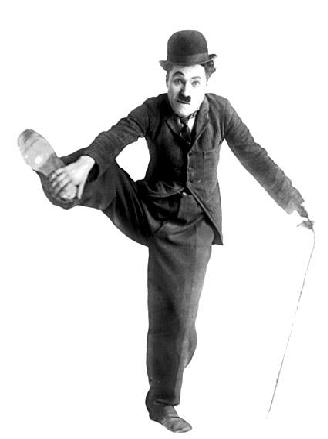The History of Film
Part 2 - The Silent Era

Silent film legend Charlie Chaplin.
This article is part of a feature of four articles detailing 120 years of cinematic history.
Although the invention of film occurred in the late 1880s, scientists were not able to successfully add synchronous sound to the moving pictures until the 1920s. The lack of sound, however, does not detract from the importance of early film making history. In order to combat the lack of sound in film, early film producers employed musicians to play background music to match the mood of the film. Other tricks of the trade at the time included the use of live sound effects and narration, as well as subtitles printed directly on the frames of film.
Initially viewed as a mere novelty, producers began to realize that substantial amounts of money could be made, although longer and more inventive films were necessary to keep the audiences interested. By the early 1900s the new industry was burgeoning with films now lasting several minutes long. In order to create these more involved films multiple cameras and a larger cast and crew were used. As the producers became more intent on making money it was realized that larger audiences meant larger profits. As a result the creation of better and more sophisticated projection equipment became a top priority.
Initial exhibition of films were done in travelling tent theatres or as part of a variety theatre programme. The film prints were sold to the exhibitors at a per foot price regardless of the content of the film. Early prices within the United States were 15 cents per foot, and one shilling per foot in Britain. In 1905 the first permanent theatre devoted to the exhibit of motion pictures was opened in Pittsburgh by the name of 'The Nickelodeon.'
As the number of films being created and viewed increased, the size of the industry as well as the permanent theatres increased exponentially, initially in the United States but quickly traversing the globe. By the second decade of the 1900s the films again grew longer, and multiple reels were used for some films. The topic of these longer films was most often biblical figures, or sometimes other real-life figures.
Another important move in the industry within the United States at this time was the start of filming in California. Before 1909 the vast majority of movie production had been in the New York area, and although the American movie industry had blossomed dramatically, so to had the industry in many European countries. Then in the mid 1910s the European industry was dealt a devastating blow from which it would never fully recover, World War One. From this point on, the United States dominated the worldwide movie industry.
Another new feature, was the crediting of actors involved in the filming, something not done in the first ten years or so of film production. With this change came the birth of film superstars, and as a negative side affect, the birth of the paparazzi. The silent era was an incredible time for movie production in the United States, with the likes of Buster Keaton, Charlie Chaplin and Douglas Fairbanks acting in dozens of movies each on an annual basis.
The silent era has a certain nostalgia to film fans as it represents a more pure period in film history, a time when film was still very much in its infancy. However, with the advancement in audio recording techniques this era quickly died, making way for the next big technological challenge, colour. The origins of colour picture will be discussed in our next installment of the History of Film.
